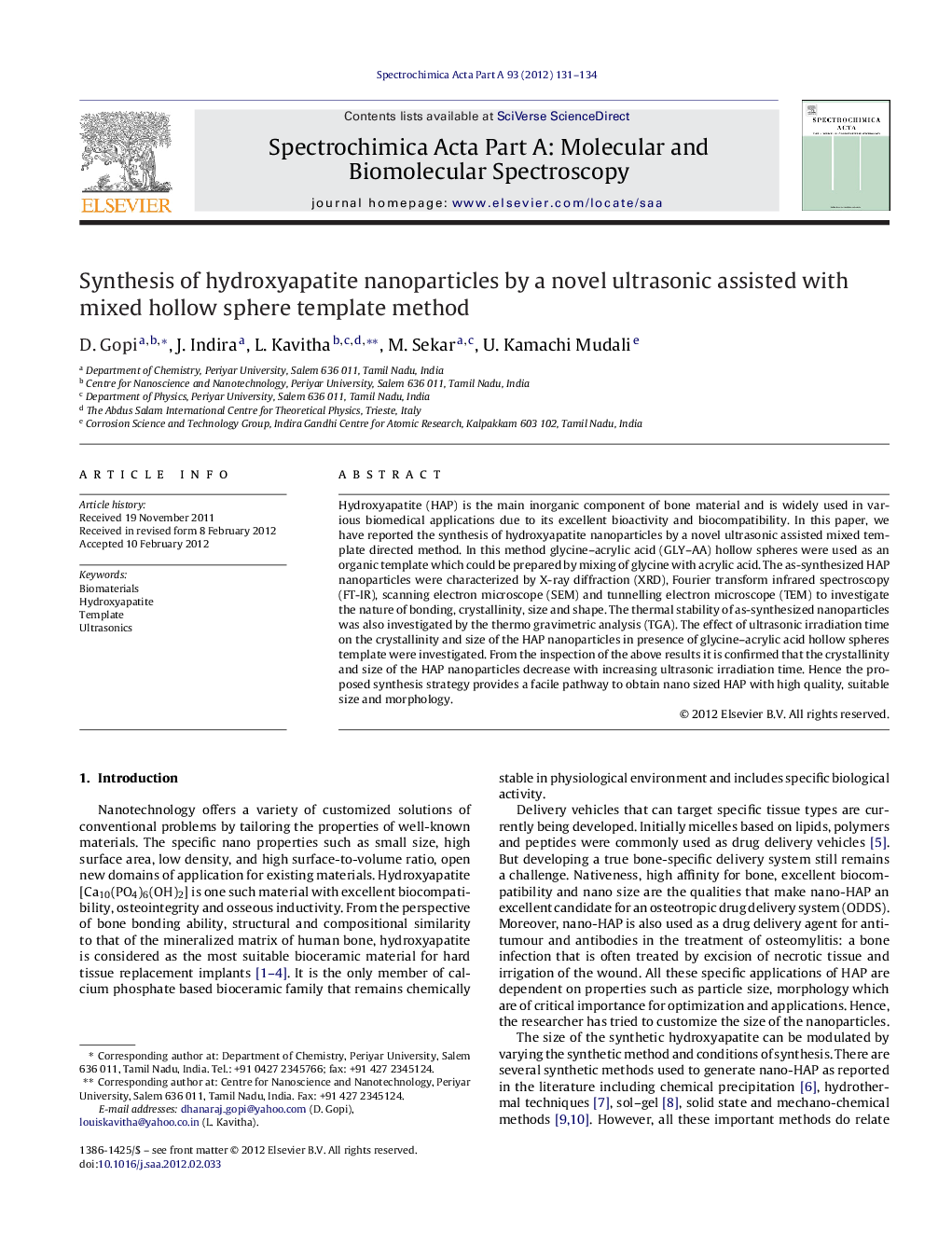| Article ID | Journal | Published Year | Pages | File Type |
|---|---|---|---|---|
| 1232767 | Spectrochimica Acta Part A: Molecular and Biomolecular Spectroscopy | 2012 | 4 Pages |
Hydroxyapatite (HAP) is the main inorganic component of bone material and is widely used in various biomedical applications due to its excellent bioactivity and biocompatibility. In this paper, we have reported the synthesis of hydroxyapatite nanoparticles by a novel ultrasonic assisted mixed template directed method. In this method glycine–acrylic acid (GLY–AA) hollow spheres were used as an organic template which could be prepared by mixing of glycine with acrylic acid. The as-synthesized HAP nanoparticles were characterized by X-ray diffraction (XRD), Fourier transform infrared spectroscopy (FT-IR), scanning electron microscope (SEM) and tunnelling electron microscope (TEM) to investigate the nature of bonding, crystallinity, size and shape. The thermal stability of as-synthesized nanoparticles was also investigated by the thermo gravimetric analysis (TGA). The effect of ultrasonic irradiation time on the crystallinity and size of the HAP nanoparticles in presence of glycine–acrylic acid hollow spheres template were investigated. From the inspection of the above results it is confirmed that the crystallinity and size of the HAP nanoparticles decrease with increasing ultrasonic irradiation time. Hence the proposed synthesis strategy provides a facile pathway to obtain nano sized HAP with high quality, suitable size and morphology.
Graphical abstractFigure optionsDownload full-size imageDownload as PowerPoint slideHighlights► Hydroxyapatite (HAP) synthesis-ultrasonic-hollow nanosphere template method. ► Hollow nanosphere template-glycine + acrylic acid (GLY–AA) mixer. ► Ultrasonic radiation and its time-purity, crystallinity and size of HAP investigated. ► Crystallinity and size of HAP nanoparticles decrease with increasing irradiation time.
